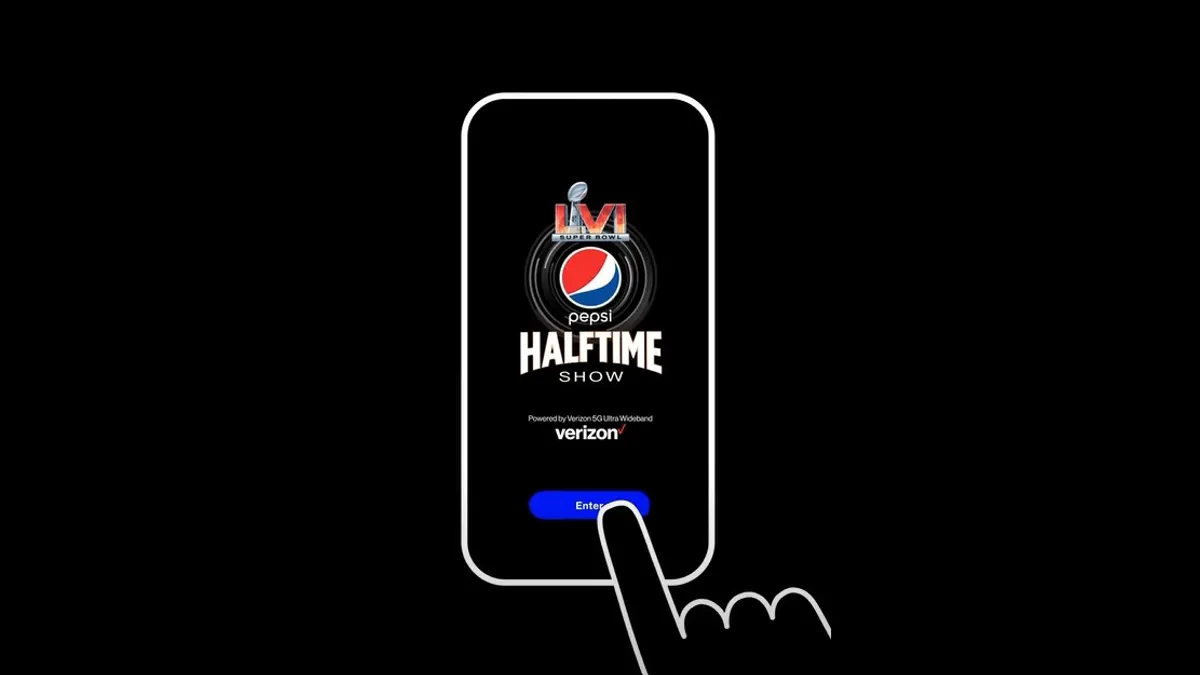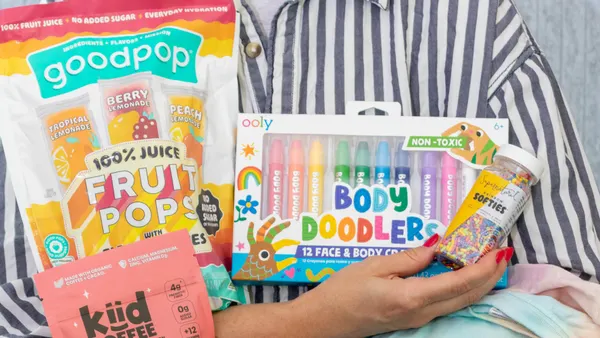Pepsi on Sunday night offered an immersive mobile experience to sports and music fans by livestreaming its star-studded Super Bowl halftime show in an app. The soda brand sought to engage viewers of America's most-watched TV event with a second-screen experience that gave them more control over how they viewed the show.
Starring Dr. Dre, Snoop Dogg, Mary J. Blige, Eminem and Kendrick Lamar, the mid-game concert was a landmark for hip-hop music as the genre approaches its 50th birthday next year. Pepsi brought the performers together on the same stage for the first time and marked the event with a mobile experience geared for today's viewing habits that often extend off the big screen to smartphones.
Recognizing that a growing portion of the Super Bowl audience uses their phone while watching the game, the beverage behemoth last month introduced the Pepsi Super Bowl Halftime Show app as a free download in the Apple App Store and Google Play. To entice people to continue returning to the app while building excitement for the show, Pepsi offered merchandise giveaways and surprise product drops. The app's content included behind-the-scenes footage about preparations for the halftime show and the making of Pepsi's video short that spotlighted each performer.
"In the weeks leading up to the Pepsi Halftime, we dropped a trailer, 'The Call,' that went viral within a week, with over 12 million views and fan reaction videos taking the internet by storm," Todd Kaplan, vice president of marketing at Pepsi, said by email. "We are always looking for ways to level up and deepen the fan experience. It brought fans closer to their favorite artists during one of the most anticipated Pepsi Halftime shows of all time."
360-degree camera views
The most immersive part of the app was its Ultra Pass, which gave app users access to livestreamed views of the halftime show that weren't available to TV viewers of the 12-minute telecast. Pepsi worked with the National Football League, entertainment company Roc Nation and telecommunications giant Verizon to install several 360-degree cameras throughout SoFi Stadium in Los Angeles. The Pepsi app let users select different views of the show as if they were standing directly on the field or on stage amid the performers, offering them a more active, immersive experience than if they watched passively via TV or streaming.
Pepsi's specialized app aligns with a broader trend of brands offering second-screening experiences to further engage consumers on mobile devices. In January, video ad network AdColony found that 59% of Super Bowl viewers think its important to keep up with the game on multiple devices, a 16% lift from the 2021 championship game. While broadcast TV remains the top device for watching the annual event, more viewers were estimated to use their smartphones during this year's game compared with Super Bowls past. This uptick in second-screening during points to ripe opportunities for marketers to connect with mobile-savvy viewers in ways that don't involve a pricey ad buy. Pepsi's approach extends its big game effort beyond TV in a multichannel approach that recognizes many viewers may be on their phones during the game.
The experience was the culmination of a months-long effort to promote the halftime show after announcing the performers in late September. Meanwhile, the NFL sought to rebuild its TV ratings for the regular season as fans were welcomed back into stadiums following the easing of pandemic restrictions. The NFL averaged 17.1 million viewers for each its 272 regular-season games, a 10% gain from the prior year and the highest average since 2015, the Associated Press reported. Those stronger ratings helped to propel viewer interest into the post-season playoffs and support gains for the hyped championship game. The Super Bowl's ratings this year rebounded from the 14-year low in 2021. With a gain of 15.9 million viewers since last year, the championship game's audience expanded to 112.3 million on NBC, Spanish-language network Telemundo and streaming platform Peacock, per data cited by CNBC.
Revisiting last year's approach
For the second straight year, Pepsi focused its promotional efforts on the halftime show while eschewing in-game ads. Its multichannel campaign in the lead-up to last year's Super Bowl included its first national spot to promote a live concert starring singer The Weeknd. Pepsi aired the commercial throughout the playoffs to build interest in the mid-game spectacle.
"Last year, we decided to double down on the 12 minutes we already own in-game and evolve it from one night to a multi-week marketing machine featuring national TV ads, retail promotions and digital platforms offering fans unprecedented access to artist and show content," Kaplan said. "This year, we revisited this highly successful approach for the most anticipated Pepsi Halftime show to date."
Pepsi's latest investment in the halftime show has continued to pay off with an afterglow of positive press coverage and additional viewership online. This year's performance has racked up more than 47 million views on YouTube, a number that's likely to grow in the years ahead. The video of Shakira and Jennifer Lopez's halftime performance from two years ago has about 225 million views.
"It's been thrilling to see consumers' reactions to the Ultra Pass since [Sunday] night and [Monday] morning following an epic show," Kaplan said.











